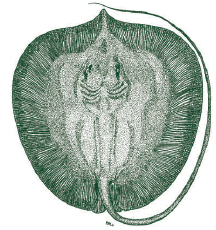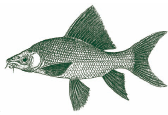Mekong fisheries index
Vietnamese catfish prices soar but
farmers short of stock
Vietnam News Agency, 25 April 2009,
Catfish prices in the Mekong Delta surged by 20 percent at the end of April, leaving Vietnamese farmers and traders short of fish. The price topped VND19,000 (US$ 1.11) per kilo on 24 April and was expected to rise after hovering around VND14,000 (US$ 0.80) for the previous months. However, most catfish breeders in the region cannot take advantage of the higher prices because they have fewer fish left in their cages. Some provinces, such as An Giang Province in Viet Nam, which is the largest catfish farming province in the country, are only producing 10 percent of the fish they produced last year, leaving many farmers facing increased debt. Sales are falling short of processors' needs because farmers are deliberately holding back their product, waiting for the next price rise. The main force behind the in crease in price rise for catfish is said to be increased demand from the Russian, Middle Eastern and Eastern European Markets.

Viet Nam police seize over 35 tons
of illegal blowfish
Thannien News, 24 April 2009
Police in the Vietnamese Mekong Delta province of Kien Giang have seized over 35 tons of illegally caught blowfish since February and admit they are having trouble controlling the racket in the poinsonous but endangered species. Le Thanh Liem, chief inspector of the provincial Health Department, said it was difficult to crack down on the racket with a coastline that is more than 200 kilometers long. Catching selling and processing of blowfish is illegal in several Vietnamese localities, including Kien Giang and Ho Chi Minh City. Chief inspector Liem said part of the problem was that the current fines of up to tens of millions of dong were not enough of a deterrent to the smugglers who make huge profits from poaching the fish. Blowfish, which live in both fresh and salt water, are the second most poisonous vertebrate in the world after the golden poison frog. The skin and certain internal organs are fatal to humans but the meat is considered a delicacy. Several people in Viet Nam have died as a result of eating the fish in recent months.

200,000 endangered carp bred and released
in the Mekong
MRC, 22 April 2009
200,000 young fish that can grow to up to 70 kg in weight and over 1.65 metres in length were released into the Mekong as part of a Lao/Thai breeding programme. The endangered Jullien's golden carp (Probarbus jullieni), were bred in Thailand by the Lao and Thai governments, with support from the Mekong River Commission (MRC). The two countries have established "breeding stations" for the fish along the Mekong River in Loei, Nongkhai, Mukdaharn, Nakornphanom and Champassak, where large numbers of fingerlings have been bred, as part of efforts to protect and preserve giant Mekong species. "Fish are extremely important in the diets of all those that live along the Mekong, providing more than 50 percent of annual protein," said Jeremy Bird, CEO of the MRC. "Releasing fish into the river system will help conserve vulnerable Mekong species, with a view to maintaining aquatic biodiversity, and guaranteeing the availability of fish today and for future generations." Jullien's golden carp is one of the largest fresh-water species in Southeast Asia. It migrates great distances up the Mekong to reproduce, with fish swimming from Kompong Cham in Cambodia to Chiang Khong in Thailand, and further up the Nam Ta in Laos to breed. It is a popular fish for eating, sometimes consumed raw and commands a high market price. But its popularity has an environmental toll - contributing directly to the low numbers of fish in the wild and prompting regional governments to classify it as an endangered species, with international trade banned.

New Mekong snow trout discovered
Practical fish keeping, 9 February 2009
Chinese ichthyologists have described a new species of Mekong dwelling snow trout in a paper published in a recent issue of the journal Zootaxa. Schizothorax nudiventris lives in the upper Mekong River drainage in southern China and has a blunt snout, thin upper lip, well-developed and trilobed lower lip, continuous postlabial groove and a scaleless abdomen in mature individuals. It has a soft last one-quarter of the last unbranched dorsal-fin ray, with 15-21 serrae along its posterior edge and a pelvic-fin that originates beneath or behind a vertical line through the dorsalfin. It can be identified by irregular black spots on both sides of the body. Schizothorax nudiventris is named after its scaleless abdomen (latin nudus=naked and venter=abdomen). Jian Yang, Xiaoyong Chen and Junxing Yang discovered the species, along with two others types of Snow Trout, Schizothorax beipanensis and Schizothorax heterophysallidos, which live in the Beipan River and Nanpan River in Souther China respectively. For more information, see the paper: Yang, J, X-Y Chen and J-X Yang (2009) The identity of Schizothorax griseus Pellegrin, 1931, with descriptions of three new species of schizothoracine fishes (Teleostei: Cyprinidae) from China. Zootaxa 2006, pp. 23-40.
Giant stingray could be world's biggest
LabNews.co.uk, 29 April 2009
Scientists in Thailand have caught what they believe could be the world's biggest stingray. The fish was tagged and released in central Thailand during the National Geographic expedition, which seeks to find and protect specimens of the world's largest freshwater fish Conservation biologist and the lead researcher on the expedition, Zeb Hogan of the University of Nevada said: "In terms of disk width, this is the second largest stingray I've seen, the largest was in Cambodia in 2003." However, he said that the recently caught stingray was thicker, 'so it may have weighed more." At up to 350 kg, this species of giant freshwater stingray has the potential to be the largest freshwater fish in the world. The current record holder for the world's largest freshwater fish is a 292 kg Mekong giant catfish caught by fishermen in northern Thailand in 2005. Freshwater giant stingrays are among the largest of the approximately 200 species of rays. They can be found in a handful of rivers in Southeast Asia and northern Australia.

Vietnamese increase efforts to promote
catfish abroad
VOV News, 12 April 2009
At a recent conference in An Giang province in Viet Nam, the Prime Minister of Viet Nam directed his own government to take measures to increase the production and consumption of basa catfish, with the aim of turning it into one of the country's major exports. Basa fish is already one of Viet Nam's key aquatic export products. The Vietnamese Prime Minister cited the need to increase seafood export earnings and generate jobs for local people in the Mekong River Delta, which is the country's largest aquatic farming area. The industry has was hit by a reduction in demand, with several Egyptian newspapers reporting that Vietnamese basa fish live in contaminated rivers and contained antibiotic residue that could be harmful to consumers. However, the Vietnamese government has called this "misleading information."

Huge population of Rare dolphins discovered
ScienceDaily, 2 April 2009
The Wildlife Conservation Society (WCS) has announced the discovery of a huge population of rare Irrawaddy dolphins in South Asia. WCS researchers estimate that nearly 6,000 of the dolphins, which also populate the Mekong River, were found living in freshwater regions of Bangladesh's Sundarbans mangrove forest and adjacent waters of the Bay of Bengal. Very little marine mammal research has taken place in this region up to this point. Prior to this study, the largest known populations of Irrawaddy dolphins numbered in the low hundreds or less. In 2008, they were listed as vulnerable in the IUCN Red List based on population declines in known populations. "This discovery gives us great hope that there is a future for Irrawaddy dolphins," said Brian D. Smith, the study's lead author. "Bangladesh clearly serves as an important sanctuary for Irrawaddy dolphins, and conservation in this region should be a top priority." The Irrawaddy dolphin grows to some 2 to 2.5 meters in length and frequents large rivers, estuaries, and freshwater lagoons in South and Southeast Asia. In Myanmar's Ayeyarwady River, these dolphins are known for "cooperative fishing" with humans.
Short supply of fish, shrimp may cost
thousands of Vietnamese jobs
Vietnam net bridge, 23 February 2009
Over 20,000 seafood processing factory workers in Viet Nam's Cuu Long Province in the Mekong Delta are at risk of losing their jobs, with most plants working at just 30-40 per cent capacity. Factories are blaming a reduction in catch, due to a drop in overseas demand for the shortage in supply of shrimp and fish for processing. This marks a huge difference from previous years when seafood processing firms typically suffered a dearth of workers in the days following the Tet (Lunar New Year) holiday. This year, most factories are not recruiting new workers and, plan to cut down on their existing workforce. For example, the shrimp processing factory of Sao Ta Co has a capacity of 40 tonnes of shrimp per day but its current intake is just one tonne per day. The firm has recently announced that it intents to cut 700 jobs. Many other seafood factories in the southernmost province of Ca Mau are operating at around 40 per cent of their capacity.

Choose a newsletter:
